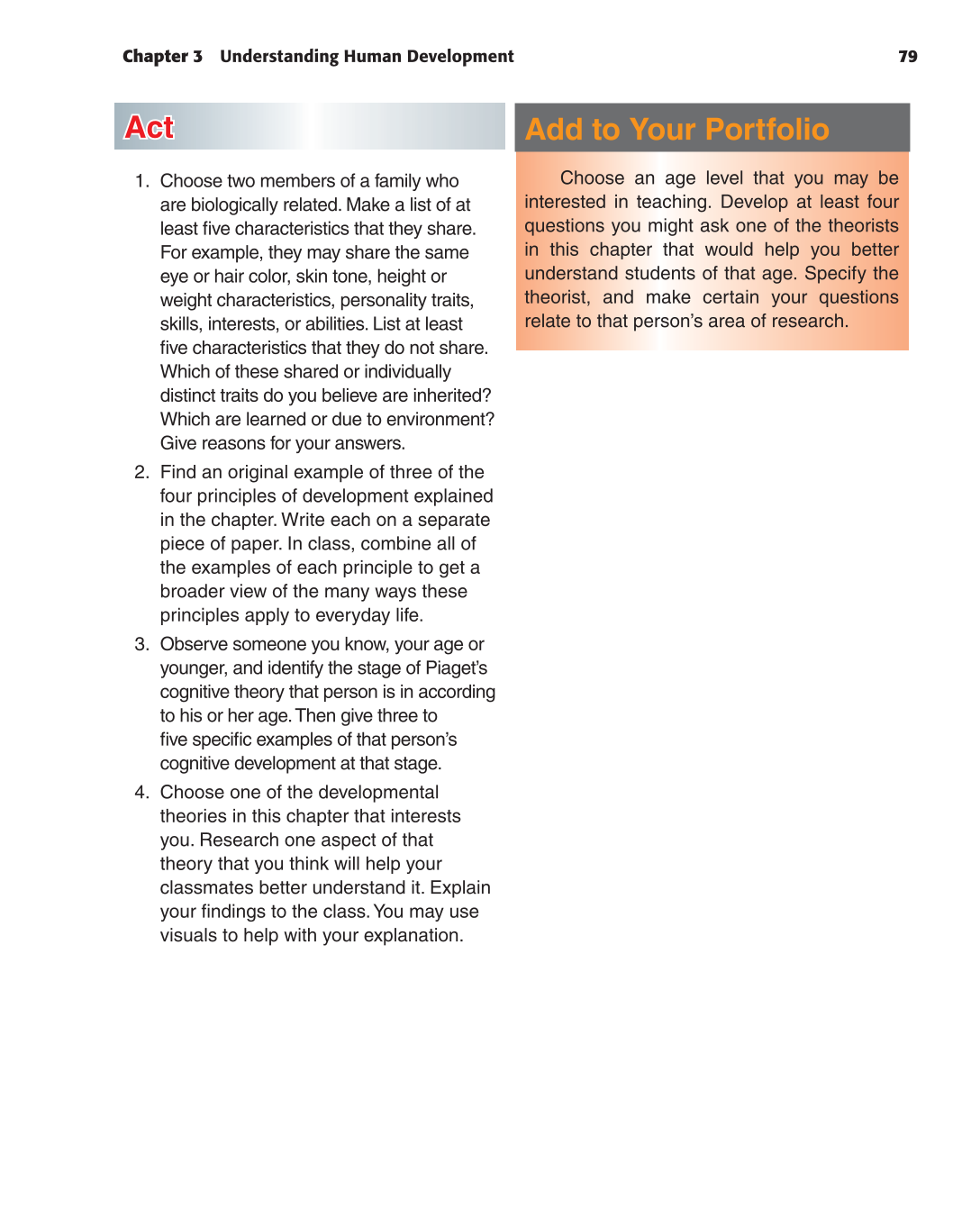Chapter 3 Understanding Human Development 79
Act Act
1. Choose two members of a family who
are biologically related. Make a list of at
least fi ve characteristics that they share.
For example, they may share the same
eye or hair color, skin tone, height or
weight characteristics, personality traits,
skills, interests, or abilities. List at least
fi ve characteristics that they do not share.
Which of these shared or individually
distinct traits do you believe are inherited?
Which are learned or due to environment?
Give reasons for your answers.
2. Find an original example of three of the
four principles of development explained
in the chapter. Write each on a separate
piece of paper. In class, combine all of
the examples of each principle to get a
broader view of the many ways these
principles apply to everyday life.
3. Observe someone you know, your age or
younger, and identify the stage of Piaget’s
cognitive theory that person is in according
to his or her age. Then give three to
fi ve specifi c examples of that person’s
cognitive development at that stage.
4. Choose one of the developmental
theories in this chapter that interests
you. Research one aspect of that
theory that you think will help your
classmates better understand it. Explain
your fi ndings to the class. You may use
visuals to help with your explanation.
Add to Your Portfolio
Choose an age level that you may be
interested in teaching. Develop at least four
questions you might ask one of the theorists
in this chapter that would help you better
understand students of that age. Specify the
theorist, and make certain your questions
relate to that person’s area of research.
